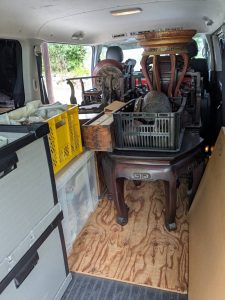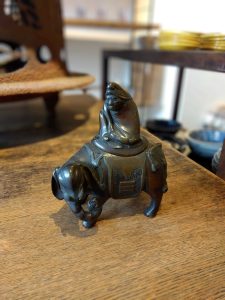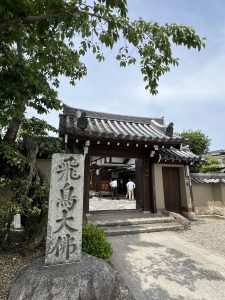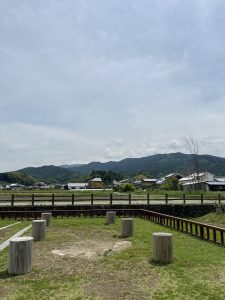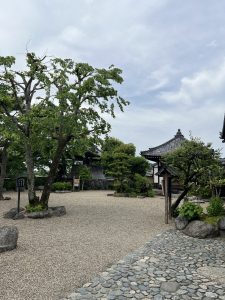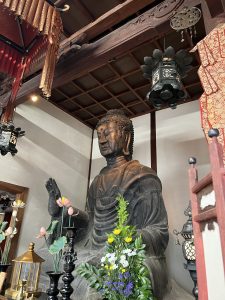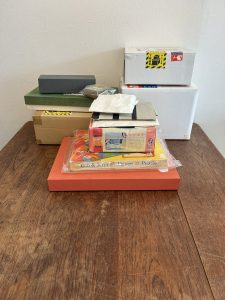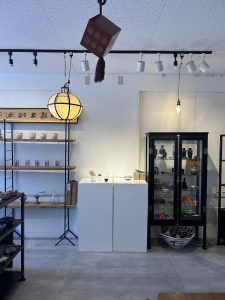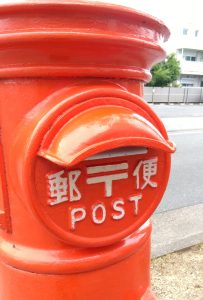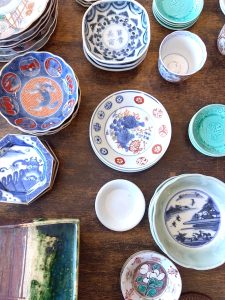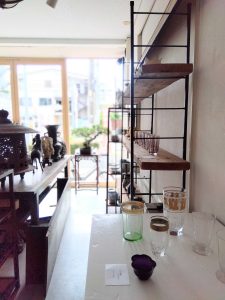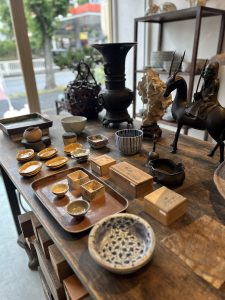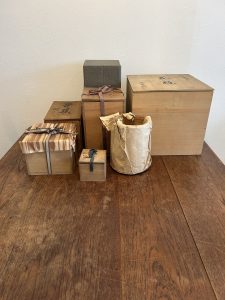名古屋場所、気になりますね。(愛知県名古屋市千種区姫池通 骨董買取 古美術風光舎)
2025.05.31
昨日第75代横綱に昇進した大の里の横綱推挙状授与式と奉納土俵入りが明治神宮で行われましたね。初土俵から13場所目での「史上最速」での横綱昇進となりました。
雨天の一般観覧は中止となり、神殿内での奉納となりました。残念に思うファンの方も多かったと思いますが、神殿内の奉納も厳かな雰囲気でとても印象的でした。コロナ禍に無観客でオンライン視聴ができた照ノ富士の奉納土俵入りも神殿内で行われましたが、これまでの横綱昇進後の奉納土俵入りは天候に恵まれることが多く雨が降ることはなかったようです。これも「唯一無二」の横綱の運命なのでしょうか。
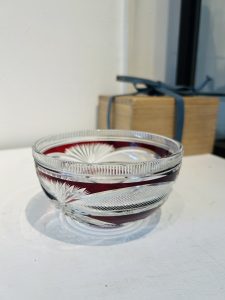
過去には貴乃花の奉納土俵入りでは史上最多の2万人の観覧客を集めました。かなりの大相撲人気だったと記憶に残っています。大の里と同じ雲竜型でしたが、片足が真っすぐ高く上がり、バレリーナですかと思うほどでした。
型には雲竜型と不知火型という型があるようですが、横綱によってかなり個性が出るようですので、過去の映像を見返し見るのも面白いかもしれません。
ニュース映像で初めて観たのですが、奉納土俵入りの際の横綱の綱は部屋の力士たちによって作られるのですね。綱打ちと呼ばれるそうで、大の里と師匠の二所ノ関親方が見守る中、後輩の力士たちが紅白のねじり鉢巻きを締め、麻を白い布で巻いた3本の綱と銅線を「ひい、ふう、の、みい」の掛け声に合わせて約2時間かけて綱を打ちます。重さは7.2キロもあるそうで、常人ならおそらく立っていられないでしょう。
192cm、191キロの立派な体格に純白の綱が巻かれた姿は、正に横綱といった貫禄ある姿でした。
ただ5月場所では、千秋楽の結びの一番で横綱の豊昇龍に敗れ、あと一歩のところで全勝とはなりませんでした。それにしましても千秋楽での豊昇龍の気迫は鬼気迫るものがあり、相撲については素人の私でも横綱の意地をひしひしと感じ、胸を打たれました。
次は名古屋場所、新しく新設される「IGアリーナ」が会場となりますね。大相撲にハマってきている身としてはどこかで力士とすれ違わないかと微かな期待を抱いております。
それでは、また次の機会に。(スタッフH)
Yesterday, the ceremony to award the letter of promotion to the 75th yokozuna, Ohnosato, and the dedication ring-entering ceremony were held at Meiji Jingu Shrine. It was the “fastest” yokozuna promotion in history, taking 13th place after his first ring appearance.
The public viewing was cancelled due to rain, and the dedication was held inside the temple. Although many fans were disappointed, the dedication inside the temple was also very impressive with its solemn atmosphere. Terunofuji’s ring-entering ceremony, which could be viewed online without spectators due to the Corona disaster, was also held inside the temple. Is this also the fate of the “one and only” yokozuna?
In the past, Takanohana’s dedication ring-entering ceremony attracted 20,000 spectators, the largest number in history. I remember it was quite a popular sumo event. He had the same Unryu kata as Onosato, but one of his legs went straight up so high that you would have thought he was a ballerina.
There are two types of kata, Unryu kata and Shiranui kata, and each yokozuna seems to have his own personality, so it would be interesting to look back at past videos.
I saw for the first time on the news that the yokozuna’s rope during the dedication ring-entering ceremony is made by the rikishi of the yokozuna’s stable. It is called “tsuna-uchi,” and it takes about two hours for the junior rikishi, with Onosato and his master, Futashonoseki, watching over them, to tie red and white twisted headdresses around three ropes made of hemp wrapped in white cloth and copper wire to the call of “Hii, fu no, no, mii” (Hii, fu no, mii). It is said to weigh 7.2 kilograms, and an ordinary person would probably not be able to stand.
The sight of the pure white rope wrapped around the 192-centimeter, 191-kilogram figure was truly a dignified yokozuna.
In the May tournament, however, he fell just short of winning the whole tournament, losing to yokozuna Toyoshoryu in the concluding bout of the Chishu-rakura tournament. Even so, Toyoshoryu’s spirit in the final bout was so spirited that even as an amateur, I was struck by the determination of the yokozuna.
The next tournament will be held in Nagoya at the newly built “IG Arena. As a person who is getting into sumo, I have a faint hope that I will cross paths with a sumo wrestler at some point.
So, I will see you next time. (Staff )
*****************
ご実家の整理やお片付けなどをされている方のご相談などが多くございます。
お片付けなどくれぐれもご無理のないようになさってくださいませ。
風光舎では古美術品や骨董品の他にも絵画や宝石、趣味のお品など様々なジャンルのものを買受しております。
お片付けをされていて、こういうものでもいいのかしらと迷われているものでも、どうぞお気軽にご相談下さいませ。
また風光舎は、出張買取も強化しております。ご近所はもちろん、愛知県内、岐阜県、三重県その他の県へも出張いたします。
まずは、お電話お待ちしております。
なお、毎月21日の持込鑑定会では無料鑑定・買取・持込など、ご予約なしで承っております。
ご近所の皆さま、ご遠方のみなさまも、お気軽にお越しくださいませ。
愛知県名古屋市千種区姫池通
骨董 買取【古美術 風光舎 名古屋店】
TEL052(734)8444
10:00-18:00 OPEN
#出張買取#骨董#古美術#骨董品#絵画#版画#茶道具#刀剣#彫刻

